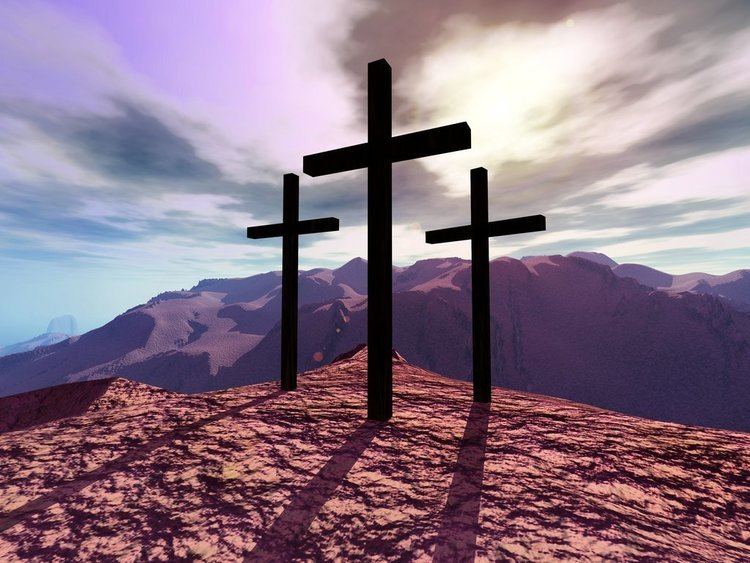 | ||
Similar | ||
Calvary mega youth fest 26 jan 2017 session 1
Calvary, also Gagulta (Aramaic: ܓܓܘܠܬܐ), was, according to the Gospels, a site immediately outside Jerusalem's walls where Jesus was crucified. Golgotha(s) (Greek: Γολγοθᾶς) is the Greek transcription in the New Testament of the Aramaic term Gagultâ. The Bible translates the term to mean place of [the] Skull, which in Greek is Κρανίου Τόπος (Kraníou Tópos), and in Latin is Calvariæ Locus, from which the English word Calvary is derived.
Contents
- Calvary mega youth fest 26 jan 2017 session 1
- Traditional location
- Temple to Aphrodite
- Location in relation to city walls
- Rockface
- Pilgrimages to Constantines Church
- Alternative locations
- Other meanings
- References
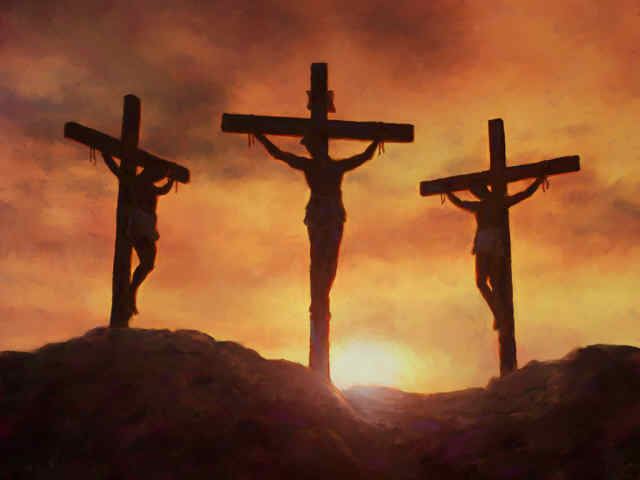
Traditional location
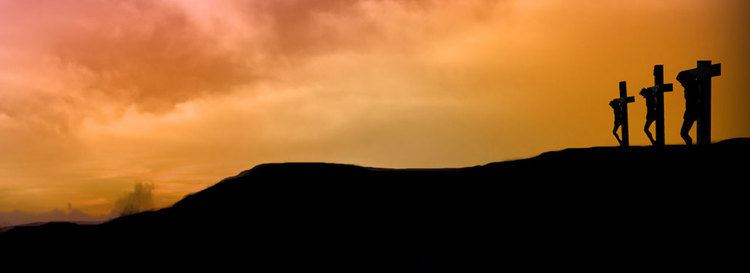
The traditional location of Golgotha derives from its identification by Helena, the mother of Constantine I, in 325. A few yards nearby, Helena also identified the location of the tomb of Jesus and claimed to have discovered the True Cross; her son, Constantine, then built the Church of the Holy Sepulchre around the whole site. In 333, the Pilgrim of Bordeaux, entering from the east described the result:
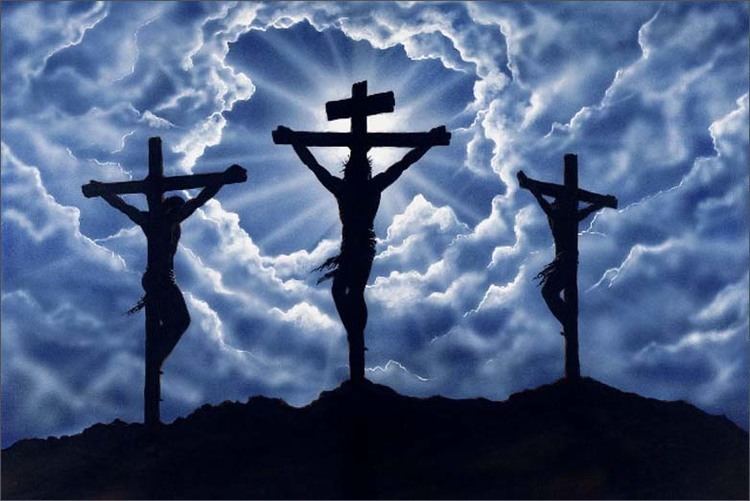
On the left hand is the little hill of Golgotha where the Lord was crucified. About a stone's throw from thence is a vault [crypta] wherein his body was laid, and rose again on the third day. There, at present, by the command of the Emperor Constantine, has been built a basilica; that is to say, a church of wondrous beauty.
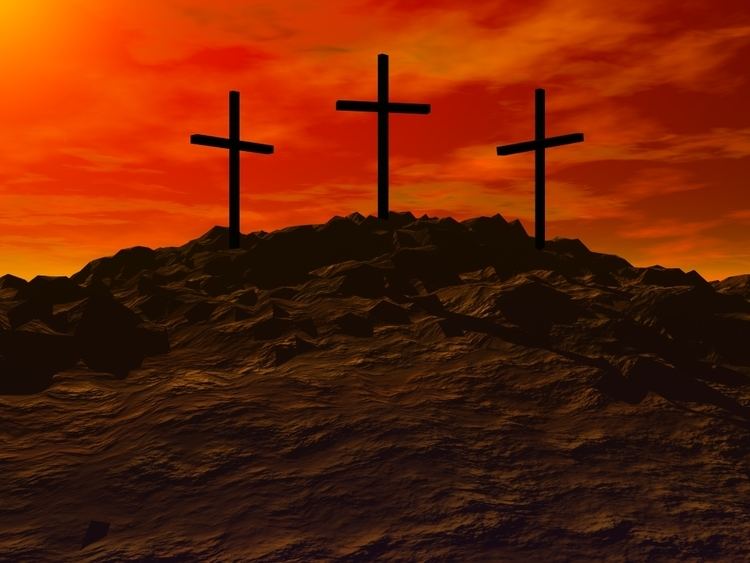
In Nazénie Garibian de Vartavan's doctoral thesis, now published as La Jérusalem Nouvelle et les premiers sanctuaires chrétiens de l’Arménie. Méthode pour l’étude de l’église comme temple de Dieu, she concluded, through multiple arguments (mainly theological and archaeological), that the true site of Golgotha was precisely at the vertical of the now buried Constantinian basilica's altar and away from where the traditional rock of Golgotha is situated. The plans published in the book indicate the location of the Golgotha within a precision of less than two meters, below the circular passage situated a metre away from where the blood stained shirt of Christ was traditionally recovered and immediately before the stairs leading down to "St. Helena's Chapel" (the above-mentioned mother of Emperor Constantine), alternatively called "St. Vartan's Chapel".
Temple to Aphrodite
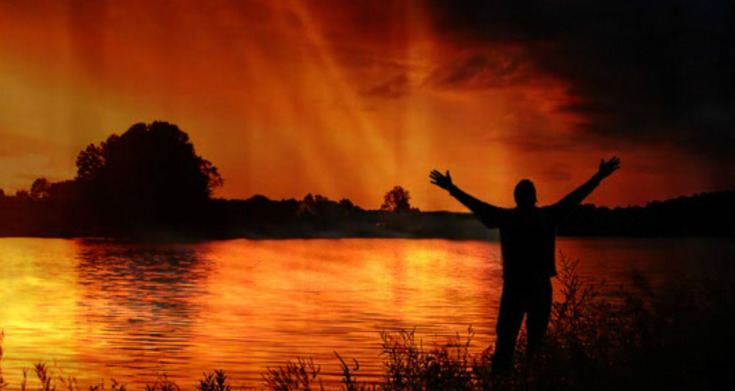
Prior to Helena's identification, the site had been a temple to Aphrodite. Constantine's construction took over most of the site of the earlier temple enclosure, and the Rotunda and cloister (which was replaced after the 12th century by the present Catholicon and Calvary chapel) roughly overlap with the temple building itself; the basilica church which Constantine built over the remainder of the enclosure was destroyed at the turn of the 11th century, and has not been replaced. Christian tradition claims that the location had originally been a Christian place of veneration, but that Hadrian had deliberately buried these Christian sites and built his own temple on top, on account of his alleged hatred for Christianity.
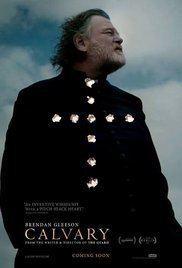
There is certainly evidence that circa 160 CE, at least as early as 30 years after Hadrian's temple had been built, Christians associated it with the site of Golgotha; Melito of Sardis, an influential mid-2nd century bishop in the region, described the location as "in the middle of the street, in the middle of the city", which matches the position of Hadrian's temple within the mid-2nd century city.
A typical Roman city was built according to a Hippodamian grid plan; a North-South arterial road, the Cardo (which is now the Suq Khan-ez-Zeit), and an East-West arterial road, the Decumanus Maximus (which is now the Via Dolorosa). The forum would traditionally be located on the intersection of the two roads, with the main temples adjacent. However, due to the obstruction posed by the Temple Mount, as well as the Tenth Legion encampment on the Western Hill, Hadrian's city had two Cardo, two Decamanus Maximus, two forums, and several temples. The Western Forum (now Muristan) is located on the crossroads of the West Cardo and what is now El-Bazar/David Street, with the Temple of Aphrodite adjacent, on the intersection of the Western Cardo and the Via Dolorossa. The Northern Forum is located north of the Temple Mount, on the junction of the Via Dolorossa and the Eastern Cardo, adjacent to the Temple of Jupiter Capitolinus intentionally built atop the Temple Mount. Another popular holy site that Hadrian converted to a pagan temple was the Pool of Bethesda, possibly referenced to in the fifth chapter of the Gospel of John, on which was built the Temple of Asclepius and Serapis. While the positioning of the Temple of Aphrodite may be, in light of the common Colonia layout, entirely unintentional, Hadrian is known to have concurrently built pagan temples on top of other holy sites in Jerusalem as part of an overall Romanization policy.
Archaeological excavations under the Church of the Holy Sepulchre have revealed Christian pilgrims' graffiti, dating from the period that the Temple of Aphrodite was still present, of a ship, a common early Christian symbol and the etching "DOMINVS IVIMVS", meaning "Lord, we went", lending possible support to the statement by Melito of Sardis asserting that early Christians identified Golgotha as being in the middle of Hadrian's city rather than outside.
Location in relation to city walls
The New Testament describes the crucifixion site, Golgotha, as being "near the city" (John 19:20), and "outside the city wall" (Hebrews 13:12). Matthew 27:39 and Mark 15:29 both note that the location would have been accessible to "passers-by". The traditionally identified location is in the heart of Hadrian's city, well within Jerusalem's Old City Walls; there has therefore been some questioning of the legitimacy of the traditional identification on these grounds. Some defenders of this tradition have responded by citing Jewish history of the wall, that the city had been much narrower in Jesus' time, with the site then having been outside the walls; since Herod Agrippa (41–44) is recorded by history as extending the city to the north (beyond the present northern walls), the required repositioning of the western wall is traditionally attributed to him as well. In 2003, Professor Sir Henry Chadwick (former Dean of Christ Church, Oxford) argued that when Hadrian's builders replanned the old city, they "incidentally confirm[ed] the bringing of Golgotha inside a new town wall."
Some Protestant advocates of an alternative site claim that a wall would imply the existence of a defensive ditch outside it, so an earlier wall couldn't be immediately adjacent to the Golgotha site, which combined the presence of the Temple Mount would make the city inside the wall quite thin; essentially for the traditional site to have been outside the wall, the city would have had to be limited to the lower parts of the Tyropoeon Valley, rather than including the defensively advantageous western hill. Since these geographic considerations imply that not including the hill within the walls would be willfully making the city prone to attack from it, some scholars, including the late 19th century surveyors of the Palestine Exploration Fund, consider it unlikely that a wall would ever have been built which would cut the hill off from the city in the valley. However, in 2007 Dan Bahat, the former City Archaeologist of Jerusalem and Professor of Land of Israel Studies at Bar-Ilan University, stated that "Six graves from the first century were found on the area of the Church of the Holy Sepulchre. That means, this place [was] outside of the city, without any doubt…", casting doubt on the "Strategic Weakness" and "Defensive Ditch" hypotheses.
Rockface
During 1973–1978 restoration works and excavations inside the Church of the Holy Sepulchre and under the nearby Muristan, it was found that the area was originally a quarry, from which white Meleke limestone was struck; surviving parts of the quarry to the north-east of the chapel of St. Helena are now accessible from within the chapel (by permission). Inside the church is a rock, about 7 m long by 3 m wide by 4.8 m high, that is traditionally believed to be all that now remains visible of Golgotha; the design of the church means that the Calvary Chapel contains the upper foot or so of the rock, while the remainder is in the chapel beneath it (known as the tomb of Adam). Virgilio Corbo, a Franciscan priest and archaeologist, present at the excavations, suggested that from the city the little hill (which still exists) could have looked like a skull.
During a 1986 repair to the floor of the Calvary Chapel by the art historian George Lavas and architect Theo Mitropoulos, a round slot of 11.5 cm (4.5 in) diameter was discovered in the rock, partly open on one side (Lavas attributes the open side to accidental damage during his repairs); although the dating of the slot is uncertain, and could date to Hadrian's temple of Aphrodite, Lavas suggested that it could have been the site of the crucifixion, as it would be strong enough to hold in place a wooden trunk of up to 2.5 metres (8 ft 2 in) in height (among other things). The same restoration work also revealed a crack running across the surface of the rock, which continues down to the Chapel of Adam; the crack is thought by archaeologists to have been a result of the quarry workmen encountering a flaw in the rock.
Based on the late 20th century excavations of the site, there have been a number of attempted reconstructions of the profile of the cliff face. These often attempt to show the site as it would have appeared to Constantine. However, as the ground level in Roman times was about 4–5 feet (1.2–1.5 m) lower and the site housed Hadrian's temple to Aphrodite, much of the surrounding rocky slope must have been removed long before Constantine built the church on the site. The height of the Golgotha rock itself would have caused it to jut through the platform level of the Aphrodite temple, where it would be clearly visible. The reason for Hadrian not cutting the rock down is uncertain, but Virgilio Corbo suggested that a statue, probably of Aphrodite, was placed on it, a suggestion also made by Jerome. Some archaeologists have been suggested that prior to Hadrian's use, the rock outcrop had been a nefesh - a Jewish funeral monument, equivalent to the stele.
Pilgrimages to Constantine's Church
The Itinerarium Burdigalense speaks of Golgotha in 333: "... On the left hand is the little hill of Golgotha where the Lord was crucified. About a stone's throw from thence is a vault (crypta) wherein His body was laid, and rose again on the third day. There, at present, by the command of the Emperor Constantine, has been built a basilica, that is to say, a church of wondrous beauty," Cyril of Jerusalem, a distinguished theologian of the early Church, and eyewitness to the early days of Constantine's edifice, speaks of Golgotha in eight separate passages, sometimes as near to the church in which he and his listeners were assembled: "Golgotha, the holy hill standing above us here, bears witness to our sight: the Holy Sepulchre bears witness, and the stone which lies there to this day." And just in such a way the pilgrim Egeria often reported in 383: "… the church, built by Constantine, which is situated in Golgotha …", and also bishop Eucherius of Lyon wrote to the island presbyter Faustus in 440: "Golgotha is in the middle between the Anastasis and the Martyrium, the place of the Lord's passion, in which still appears that rock which once endured the very cross on which the Lord was.", and Breviarius de Hierosolyma reports in 530: "From there (the middle of the basilica), you enter into Golgotha, where there is a large court. Here the Lord was crucified. All around that hill, there are silver screens." (See also: Eusebius in 338).
Alternative locations
The traditional location of Calvary is not universally accepted. In 1842, heavily relying on the research of Edward Robinson, a German theologian and biblical scholar from Dresden named Otto Thenius was the first to publish a proposal that the rocky knoll north of Damascus Gate was the biblical Golgotha. In 1882–83, Major-General Charles George Gordon endorsed this view, and subsequently the site has sometimes been known as Gordon's Calvary. The location, usually referred to today as Skull Hill, is beneath a cliff which contains two large sunken holes, which Gordon regarded as resembling the eyes of a skull; he and a few others before him believed that the skull-like appearance would have caused the location to be known as Golgotha.
Nearby is an ancient rock-cut tomb known today as The Garden Tomb which Gordon proposed as the tomb of Jesus. the Garden Tomb contains several ancient burial places, although the archaeologist Gabriel Barkay has proposed that the tomb dates to the 7th century BCE and that the site may have been abandoned by the 1st century. Eusebius comments that Golgotha was in his day (the 4th century) pointed out north of Mount Zion. While "Mount Zion" was used previously in reference to the Temple Mount itself, Josephus, the first-century CE historian who knew the city as it was before the Roman destruction of Jerusalem, identified Mount Zion as being the Western Hill (the current Mount Zion), which is south of both the Garden Tomb and the Holy Sepulchre.
Another alternate location has been proposed by Rodger Dusatko, a missionary in Germany. He claims that the location of Golgotha is just outside the Lions' Gate.
All four Gospels use the Greek word 'Kranion' to describe the place where Jesus was crucified. Unlike Skufion (skull), Kranion (in English - cranium) is the upper part of the skull excluding the face bones.
The Gospels Matthew, Mark and Luke testify that as Jesus died the curtain of the temple ripped. The earliest Aramaic Gospels, the Diatessaron of Tatian and the Church Fathers testify that it was the curtain at the entrance of the temple which ripped, and not the inner veil before the Holy of Holies.
And the curtain of the entrance of The Temple was ripped in two from the top unto the bottom. Mk 15,38 (Syriac Peshitta)
Since the temple faced east, the curtain would have been in direct view of those gathered on this mount at the northeast corner of the Temple Mount, just outside the city wall. And to testify that the curtain ripped at the very moment in which Jesus died, there must have been eyewitnesses.
The Gospel of John refers to Golgotha as being very near the city, so near that all who passed by could read the inscription[19:20]. Considering also the prophecy in Psalms 69:12[69:12], his place of crucifixion would have been near enough to the gate that Jesus could hear what the people were saying about him there. And just as Eusebius comments in Onomasticon concerning Golgotha as being a hill just outside Jerusalem, north of the ancient Mount Zion, this hill fits his description.
